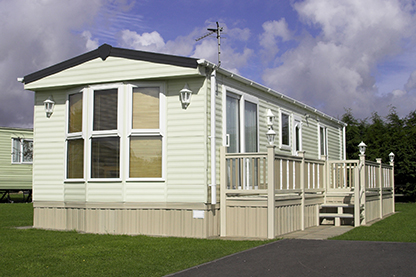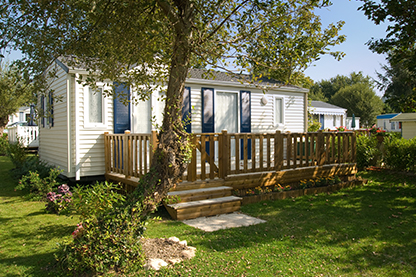With mobilehomes and manufactured homes, many are built on support systems to help them stay in place during normal living conditions—such as steel jacks or masonry piers, which were designed just for gravity loads. But, these systems are typically not built to withstand earthquake shaking.
In California, laws were enacted after the 1994 Northridge earthquake that require new or relocated mobilehomes and manufactured homes to have earthquake bracing. Unfortunately, the standards in place allow for inadequate seismic bracing systems to be installed. Recent temblors—like the 2014 South Napa quake and the 2019 Ridgecrest earthquakes—have shown that unbraced and inadequately braced homes can sustain extensive damage from an earthquake, with many sliding off their support systems onto the ground or sliding enough to disrupt habitability.
Homes need an Earthquake Resistant Bracing System (ERBS) to be installed to help them resist the damage that earthquake shaking can cause.
Earthquake Resistant Bracing System Retrofit
In California, the State of California Department of Housing and Community Development (HCD) requires that all of the bracing systems offered to residents be certified. Most of these systems can be installed as part of new home’s overall installation.
Homeowners are required to submit an Application for Permit to Install Manufactured Home/Mobilehome Earthquake Resistant Bracing System to HCD prior to installing an ERBS. The application must be filled out either by the licensed contractor hired to perform the work or signed by the owner as an owner-builder if they choose to do the work themselves. This permit and other related information can be found on HCD’s website.
Is a mobilehome or manufactured house retrofit worth it?
One way that a homeowner can ensure that the ERBS is installed properly is to require that the installation is in accordance with Federal House and Urban Development standards. HUD installation standards are found in the Code of Federal Regulations (CFR) Title 24, Model Manufactured Home Installation Standards.
Additional information on effective seismic bracing systems can be found in two documents available online:
Homeowners are cautioned that seismic bracing that is supported only on plywood or wood blocks directly on the ground have not performed well in earthquakes.
While adding an ERBS does increase the upfront cost of a new home installation, and can cost money to install on an existing home, when implemented properly they can provide substantial savings in the long term: by reducing or eliminating expensive repair costs to the home after an earthquake.
Although there can be variables depending on the size of home and its location, the installation of an ERBS typically costs less than $5,000.
Cost benefit analysis
Historic California earthquakes have shown considerable damage to mobilehomes and manufactured homes.
For example, the 1994 Northridge earthquake caused considerable in both loss of use and cost to reinstall homes on a support system. In one report that looked at 69 manufactured home parks, about 49% of the homes slid off their support systems onto the ground—with another 10% shifting, but remaining on their support system. And 2% of homes studied were destroyed by fire because their standard support systems were not able to resist earthquake shaking and gas lines were broken.
During the more recent 2019 Ridgecrest earthquakes, many mobilehomes were shaken off their foundations, leaving them uninhabitable. Residents were forced to move out of their unsafe homes, and find temporary housing at local shelters until they could repair their homes.
Considering the smaller upfront costs to install an ERBS, compared to the extensive price to fix a home that’s been shaken off its foundation, it is a smart investment move to prepare your home now—before the next earthquake strikes.
Ready to take the next steps?
In order to begin, homeowners are required to submit an Application for Permit to Install Manufactured Home/Mobilehome Earthquake Resistant Bracing System, which includes information on either the licensed contractor hired to perform the work or sign an owner-builder declaration if they choose to do the work themselves. This permit and other related information can be found on HCD’s website.
And, take the next steps in safety by learning more about personal preparedness and how to further secure items inside your home, such as bookshelves and cabinets.
And, take necessary next steps, including tips on questions to ask, so that you can have a safer and more secure home before the next earthquake strikes.


